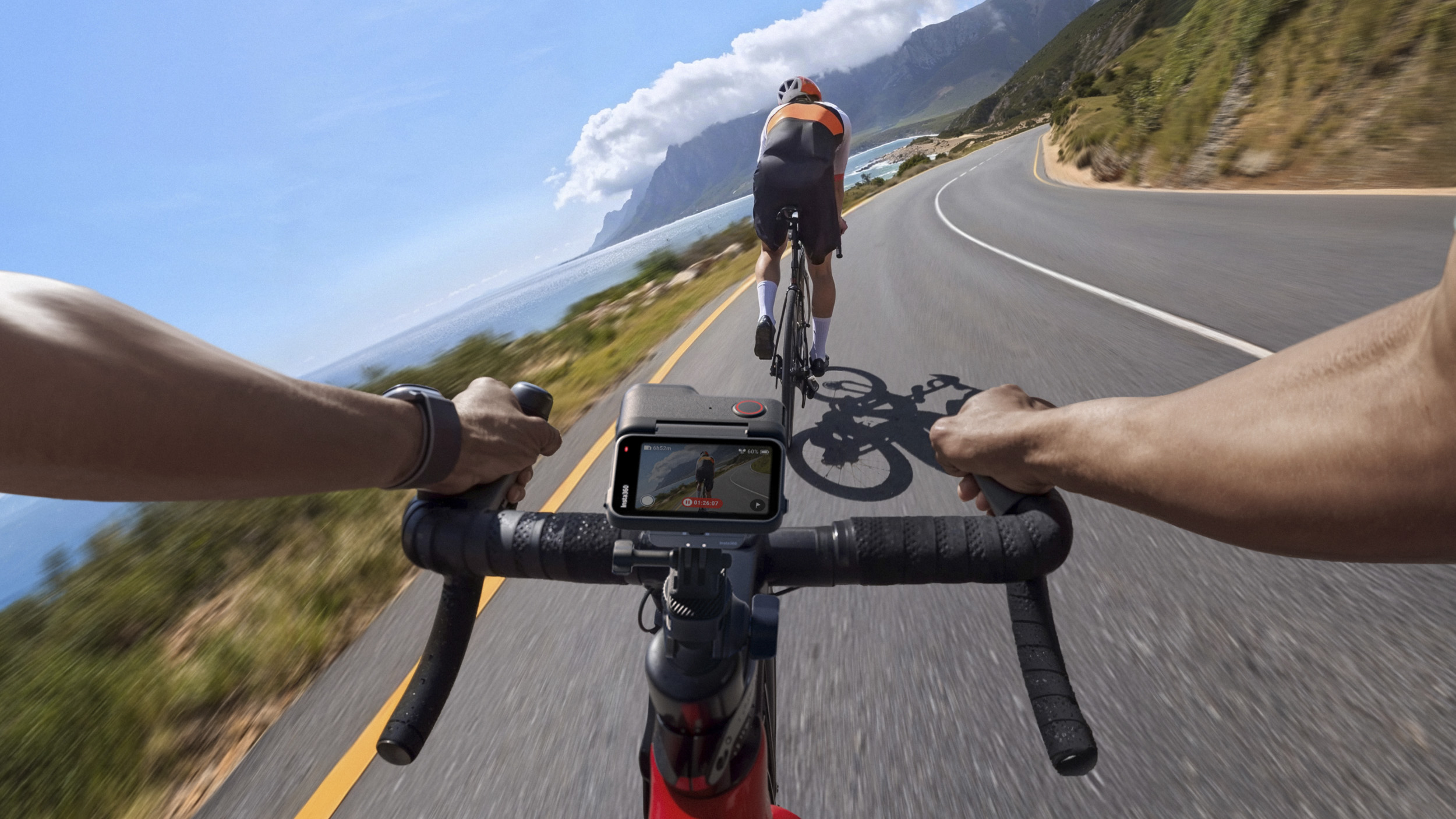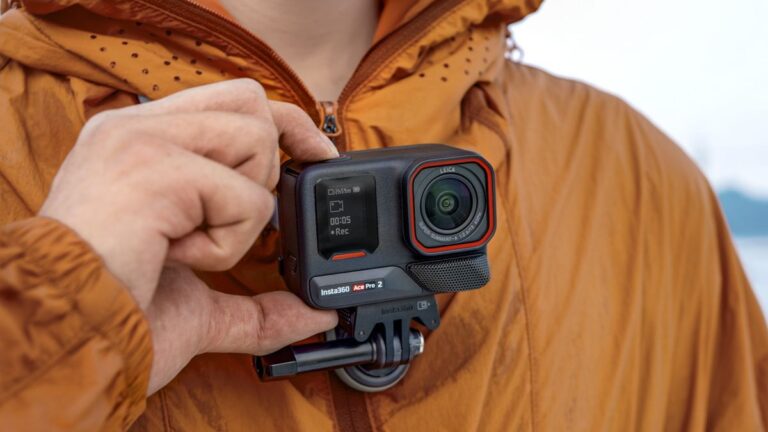Insta360’s Ace Pro was the first 8K action camera to market, and just under a year later it has a successor, the Ace Pro 2, which is a rounded upgrade ready to take on the GoPro Hero 13 Black and DJI Osmo Action 5 Pro.
You can learn how each model compares in our Hero 13 Black vs Action 5 Pro vs Ace Pro 2 piece (coming shortly) – it’s a tasty battle to claim the best action camera title. Truth is, each one has its own take on the format and will appeal to different kinds of people, with Insta360 doubling down on high-resolution 8K video as its selling point, together with what it says is the first dual chip in an action camera, designed to improve performance.
Impressive as the original Ace Pro sounded, certain features were in reality a little light, whereas the Ace Pro 2 adds the necessary substance. Its 8K video still feels a little gimmicky given how many caveats it comes with, but active HDR and PureVideo (low light) modes are now available in 4K up to 60fps and feel polished, especially now Insta360 has introduced I-Log color profile for discerning editors in some 4K modes.
There’s more to the Ace Pro 2 than its improved video recording chops too. It’s tougher than the Ace Pro, with a better flip screen, lengthier battery life, improved waterproofing and a new design to hold a lens guard just like its rivals. It also has improved audio recording and a wind guard. The sum of those parts impresses and you can learn more about Insta360’s latest action camera in our Ace Pro 2 review.
The Insta360 Ace Pro 2 costs $399.99 / £389.99 / AU$689.99 for the standard bundle, or it’s $419.99 / £409.99 / AU$719.99 for the dual battery bundle – that’s pretty much in line with GoPro and a little pricier than DJI.

Has the Ace Pro series come of age?
Being the only camera of its kind to shoot 8K video was one thing, but the Ace Pro lacked many of the advanced features found in GoPro and DJI rivals. Insta360 has looked to rectify this with the Ace Pro 2, which feels much more polished than the first-gen model.
Chief among those improvements is its dual chips, about which Insta360 says: “the Ace Pro 2 is the first action camera with a dedicated Pro Imaging Chip that handles image processing and noise reduction, while a separate 5nm AI Chip handles further image processing and overall camera performance, providing a smooth, seamless user experience.”
That’s paired with a revised 1/1.3-inch sensor that delivers 8K video up to 30fps, a 4K 120fps slow-motion mode, a 2x ‘Clarity Zoom’, plus up to 13.5 stops of dynamic range. The dedicated low light ‘PureVideo’ mode has been upgraded to reduce noise even further, too, together with that improved 60fps frame rate.
Leica is in on the action, providing its expertise for exclusive color profiles, plus in creating a Summarit lens with 157-degree field of view, wider than its rivals.
Other refinements include the larger, brighter and higher-resolution 2.5-inch flip up screen – that’s another calling card of the Ace Pro series although that does result in a bulkier camera – improved 39ft / 12m waterproofing plus neat gesture control, with the ability to pause and resume recording.
There are too many features to sensibly cover in this news piece. If you’d like to discover more do check out our Ace Pro 2 review, where you can also see how its dual chips have improved low light performance in our sample footage. Ultimately, its 8K video is still limited, but so many of its other modes are much improved, with better overall image quality thanks in part to its powerful dual chips. GoPro and DJI now have a serious rival on their hands.
- Insta360 Ace Pro 2 review: a rounded upgrade
- The best action camera for 2024: top cameras for adventures
- The DJI Osmo Action 4 has convinced me that action cams beat mirrorless for vacations
- GoPro Hero 13 Black vs DJI Osmo Action 5 Pro: has DJI dethroned GoPro?
Go to source: www.techradar.com
Discover more from Technical Master - Gadgets Reviews, Guides and Gaming News
Subscribe to get the latest posts sent to your email.








